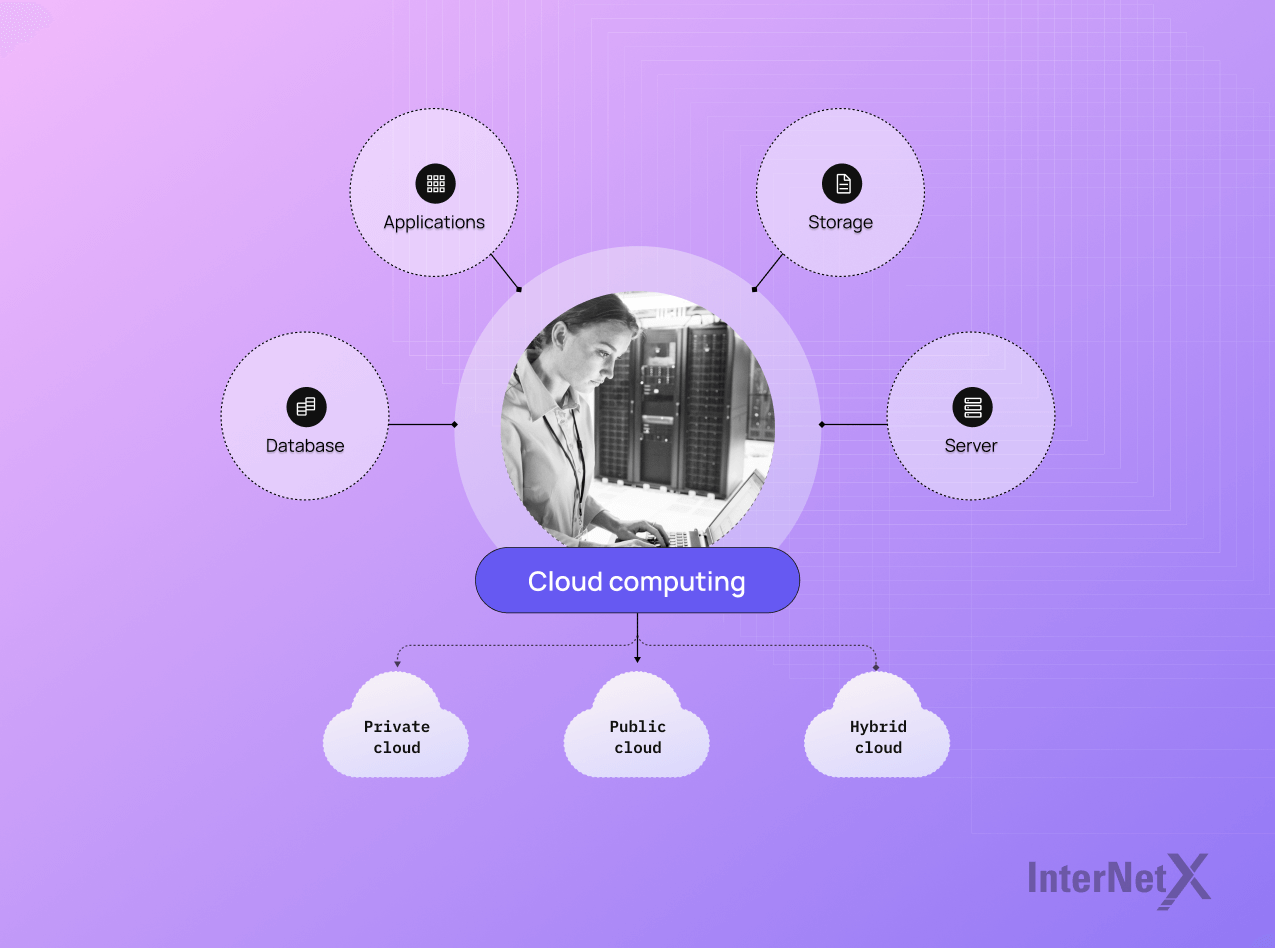
How to | Cloud migration strategy
Ready to conquer the clouds? Discover the key steps and best practices for executing a successful cloud migration strategy that takes your business to new heights.
Published by

Simone Catania
Date

The concept of cloud computing dates back to the 1960s, but it was in the 2000s that it began to gain widespread popularity. Today, cloud technology is an integral part of the modern IT infrastructure and has revolutionized the IT industry, transforming how businesses store, process and manage data. The power of cloud technology lies in its ability to provide on-demand access to shared computing resources, including servers, storage and applications. This accessibility allows businesses to rapidly scale their operations, reduce costs and improve overall performance. As companies continue to rely on cloud technology for their computing needs, migrating to the cloud has become an increasingly important step in optimizing IT infrastructure. However, without a clear migration strategy, businesses may face significant downtime, confusion and potential data breaches. Therefore, it is essential to plan and execute a well-structured cloud migration strategy.
This article will illustrate how to plan and execute a successful cloud migration strategy, including assessing existing infrastructure, defining migration goals, coordinating and planning data migration, ensuring business continuity, selecting the right cloud service provider, as well as testing deployment and post-migration considerations. Let’s get started!

Cloud technology: innovations shaping present and future
The present of cloud technology is marked by its widespread adoption across various industries and the exponential growth of cloud service providers. Many businesses are leveraging the potential of the cloud to store and manage their data, streamline operations and enhance collaboration among team members making a successful business moving billions of dollars.
- The global cloud infrastructure service spending is now a $ 247 billion business.
- The global cloud computing market was valued at $ 483.98 billion in 2022 and is expected to expand at a compound annual growth rate (CAGR) of 14.1% from 2023 to 2030.
- The revenue of the cloud security industry in Europe is estimated to reach $ 2.1 billion in 2028.
- The global cloud storage market is projected to grow from $108.69 billion in 2023 to $472.47 billion by 2030, at a CAGR of 23.4% during the forecast period.
- The global cloud applications market is expected to reach 168.6 billion U.S. dollars by 2025. Experts anticipate the need for cloud application software will experience a compound annual growth rate of 4.8%.
As we look ahead, it’s clear that cloud technology will continue to evolve and change how we live and work. With advancements in areas such as artificial intelligence, edge computing and the Internet of Things (IoT), cloud computing will become increasingly powerful and versatile. Cloud computing is expected to become even more ubiquitous, with 47% of survey participants saying that cloud computing will move to the forefront of enterprise technology over the next decade. The continued expansion of cloud offerings and capabilities accelerates growth across all public cloud services market segments. Considering these trends, organizations that efficiently utilize cloud computing technology will have a greater chance of succeeding in the future.
What is a cloud migration strategy?
The cloud migration strategy refers to an organization’s plans and actions to transition its existing IT infrastructure, applications and data from on-premises servers to cloud-based services. This strategy encompasses a systematic approach to migrating various components of the organization’s IT ecosystem, such as databases, applications, storage systems and networks, to the cloud. It helps organizations leverage the benefits of cloud computing, such as scalability, cost-effectiveness and enhanced agility while minimizing disruption to their operations.
A successful cloud migration strategy typically involves several stages: planning, assessment, design, implementation and testing. During planning, the organization evaluates its current infrastructure and identifies the most suitable cloud services and providers. The assessment phase analyzes the dependencies and challenges of migrating different applications and data to the cloud. Designing the new cloud architecture and selecting the migration approach is the next step, followed by the actual migration process. Finally, thorough testing ensures that the migrated systems function correctly and meet the organization’s requirements.
The advantages of migrating to the cloud
Many organizations recognize the immense benefit of migrating to the cloud in today’s digital age. These are the advantages it offers:
- It enables scalability, allowing businesses to quickly scale up or down their resources based on demand without requiring extensive hardware or infrastructure investments. This flexibility helps organizations stay agile and respond rapidly to changing business needs.
- Cloud migration reduces costs by eliminating the need for hardware procurement and maintenance and reducing energy consumption. It also offers a pay-as-you-go pricing model, allowing organizations to only pay for the resources they use.
- Cloud migration enhances data security and disaster recovery, as cloud service providers typically have robust security measures and backup systems to protect data and ensure business continuity.
What are the challenges of cloud migration?
Cloud migration presents several challenges that organizations need to address to ensure a smooth and successful transition.
- First and foremost, one of the biggest challenges is the complexity of migrating existing infrastructures, applications and data to the cloud. This process requires careful planning, as organizations must assess their current infrastructure, identify dependencies and determine which workloads suit migration.
- Another challenge is selecting the right cloud provider to meet the organization’s specific security, compliance, scalability and cost-efficiency needs.
- Organizations must consider data security and privacy concerns during migration to protect sensitive information from potential breaches.
- Furthermore, training and upskilling the IT team to manage and maintain the cloud environment is vital in order to ensure a seamless transition.
- Finally, optimizing and fine-tuning migrated workloads to leverage the full potential of the cloud and achieve cost savings can be a continuous challenge.
By addressing these challenges proactively, organizations can overcome the hurdles of cloud migration and reap the benefits of scalability, flexibility and enhanced efficiency.
The six R’s of cloud migration
Cloud migration is a critical step for organizations looking to leverage the benefits of the cloud. However, not all migration strategies are created equally. That’s where the six R’s come in. The six R’s approach is a framework to classify different cloud migration strategies. Let’s explain each one of them.
- Rehosting (lift and shift): This involves moving applications as-is from on-premises to the cloud. It requires minimal application architecture or code changes, making it a quick and cost-effective migration approach. However, it may need to leverage cloud-native features fully.
- Replatforming (lift, tinker and shift): In this approach, applications are migrated to the cloud with some modifications to take advantage of cloud services. The goal is to optimize the application’s architecture and performance without rearchitecting it completely. This approach balances speed and takes advantage of some cloud benefits.
- Repurchasing (drop and shop): This involves replacing an existing application with a cloud-based software-as-a-service (SaaS) alternative. It eliminates the need to maintain and manage the application in-house and can provide additional features and scalability. However, adapting to the SaaS solution may require changes in the business process.
- Refactoring (re-architecting): This approach involves significant changes to an application’s architecture and code to leverage cloud-native features fully. It requires rewriting parts of the application to make it more modular and scalable. While it offers the most benefits and flexibility, it requires more time and effort.
- Retiring: This involves decommissioning applications that are no longer needed. It helps streamline resources and reduces management overheads.
- Retaining: This means keeping specific applications on-premises for various reasons, such as legal or compliance requirements, resource limitations, or performance concerns. While the organization may adopt the cloud for other applications, some are better off staying on-premises.
The various types of cloud migration offer organizations the flexibility to select an approach that aligns with their business goals, budget and timeline. Organizations can opt for a single migration strategy or combine different methods based on specific scenarios. It’s crucial to consider that these strategies can be customized to meet the unique needs and goals of the organization. Each approach has advantages, challenges and considerations, demanding careful evaluation and meticulous planning for successful migration.
| Pros | Cons | ||
| Rehost | It involves moving applications and data to the cloud without changing the underlying architecture. | Fast and straightforward, with minimal disruption to your existing infrastructure. | Lack of optimization and limited cloud-specific capabilities. |
| Refactor | It involves minor adjustments to existing applications to optimize them for the cloud environment. | Introduces cloud features, such as automatic scaling and high availability. | Risk of introducing bugs and compatibility issues. |
| Rearchitect | It involves reimagining and redesigning applications for the cloud environment. | Modernizes legacy applications and reduces technical debt. | Complex process with potential disruption and higher upfront costs. |
| Rebuild | Rebuilding applications from scratch with cloud-native technologies and tools. | Provides the most significant benefits of the cloud, such as cost savings, flexibility and scalability. | Time-consuming, costly, and potential loss of customization. |
| Replace | Replacing existing applications with off-the-shelf cloud solutions. | Saves development time and effort and often provides more comprehensive features. | Limitations in customization and potential compatibility issues. |
| Retire | Retiring applications, data and infrastructure that are no longer relevant. | Reduces costs and simplifies your IT environment. | Potential loss of historical data and temporary disruptions. |
Planning a successful cloud migration strategy
As an IT manager or company owner, planning a successful cloud migration strategy is critical to ensure a smooth and efficient transition. A structured approach can minimize disruptions, reduce downtime and achieve your migration goals. Here we want to outline the process and provide valuable tips for planning a successful cloud migration strategy.
1 Assess existing infrastructure
Before initiating cloud migration, it is essential to evaluate your current infrastructure. This assessment should include a thorough analysis of your hardware, software and networking components. Understanding the existing infrastructure allows you to identify compatibility issues and devise appropriate migration strategies. To perform a comprehensive infrastructure assessment, consider using tools that can help automate the process. These tools can provide valuable insights into your infrastructure’s performance, identify potential bottlenecks and highlight areas for improvement.
2 Define migration goals and objectives
Setting clear goals and objectives for your migration process is crucial for success. Define what you want to achieve with the migration and establish specific, measurable, achievable, relevant and time-bound (SMART) goals. Common migration goals include reducing downtime, increasing data security, improving accessibility or optimizing costs. By defining these goals, you can align your migration strategy with your business objectives and measure the success of the migration process.
Example of SMART cloud migration goal: Data security
- Specific: Increase data security by migrating sensitive customer information to a secure and compliant cloud environment.
- Measurable: Achieve a 20% reduction in infrastructure costs by migrating non-critical workloads to the cloud.
- Achievable: Migrate all customer-facing applications and services to the cloud within six months.
- Relevant: Improve accessibility for remote employees by migrating critical business applications to the cloud.
- Time-bound: Complete the migration of all development and testing environments to the cloud by the end of Q3.
Example of a SMART cloud migration goal: Downtime mitigation
- Specific: Implement a comprehensive downtime mitigation strategy to minimize disruption to critical systems and services.
- Measurable: Achieve a 95% reduction in overall downtime compared to the baseline.
- Achievable: Migrate all business-critical applications and databases to the cloud in a phased approach, prioritizing high-impact systems.
- Relevant: Improve system reliability and availability by migrating to a highly redundant cloud infrastructure.
- Time-bound: Complete migrating all applications and services to the cloud within one year.
3 Coordinate and plan data migration
One of the critical steps in a cloud migration strategy is identifying and classifying the data that needs to be migrated. This involves understanding the dependencies and criticality of different data sets and establishing a clear plan for transferring them to the cloud. Determine the order of data migration based on dependencies to avoid data integrity or functionality issues. It is also crucial to establish a reliable backup and recovery plan to mitigate the risk of data loss during the migration process. To ensure data integrity, consider using tools and technologies to validate data integrity and perform tests to identify discrepancies or errors. By minimizing data loss and ensuring the accuracy of transferred data, you can avoid disruptions to ongoing business operations.
4 Ensure business continuity
Maintaining business continuity during the cloud migration process is a significant challenge. Consider strategies such as phased migration or utilizing hybrid cloud solutions to minimize downtime and disruptions.
A phased migration involves moving specific workloads or applications to the cloud incrementally. This approach allows you to test the migration process and address issues in smaller, manageable stages. Alternatively, leveraging hybrid cloud solutions can enable a seamless transition between on-premises and cloud environments, ensuring continuous operations during the migration. Effective communication and collaboration among stakeholders are crucial throughout the migration process. Regularly update all relevant parties about the progress, challenges and expected timelines. By involving all stakeholders and addressing their concerns, you can foster a sense of ownership and commitment to the cloud migration strategy.
5 Select the right cloud service provider
Selecting the right cloud service provider is critical in planning a successful cloud migration strategy. There are several factors to consider. First and foremost, security measures should be a top priority. Ensure the provider has robust security protocols to protect your data and applications. Compliance is another critical factor, so ensure the provider meets all the regulatory requirements for your industry, such as HIPAA or GDPR. Support is vital during the migration process and beyond. Look for a provider that offers reliable and responsive customer support, significantly contributing to your overall cloud experience. For example, InterNetX offers you 24/7 support. Additionally, request demos or trials to assess the provider’s features and capabilities firsthand. Setting up your cloud server with us is free – a financial advantage allowing you to increase your server capacity according to growing requirements flexibly. Choose a cloud service provider that aligns with your business requirements and migration goals.
6 Testing, deployment and post-migration considerations
By prioritizing testing, deployment, and post-migration considerations, you can maximize the performance and reliability of your cloud-based applications and services, ensuring a seamless and successful migration to the cloud.
Thorough testing plays a pivotal role before and after migration, guaranteeing that applications and services operate without any issues or performance bottlenecks in the new environment. This early detection ensures the timely resolution of potential compatibility issues, thus reducing the risk of downtime.
Employing best practices when deploying applications in the new cloud environment is vital. Such practices include:
- Incorporating automation tools to streamline deployment.
- Establishing proper monitoring and logging mechanisms.
- Adhering to strict security protocols.
Ultimately, these practices guarantee that your applications and services are deployed securely and efficiently, reducing the incidence of disruptions.
Post-migration considerations are crucial to optimize configurations and regulate performance to leverage the cloud environment’s full potential. This optimization facilitates peak operational performance and necessitates timely monitoring to rectify any issues. Including backup and disaster recovery plans protects your data and ensures business continuity in unforeseen circumstances.
Checklist for a successful cloud migration strategy
Following this checklist ensures that your cloud migration strategy is well-planned, efficient, and successful.
-> Determine your business objectives and goals
- Define the business goals that are driving the cloud migration strategy
- Determine how moving to the cloud can help achieve those goals
- Identify the benefits and risks of migrating to the cloud for the business
- Establish metrics to measure the success of the migration
-> Assess your infrastructure
- Take an inventory of your current infrastructure
- Identify which applications and workloads need to be migrated
- Evaluate the dependencies between different applications and systems
- Determine which applications are critical and which ones are low-priority
-> Choose a cloud provider
- Evaluate various cloud providers based on your business needs
- Choose a cloud provider that can meet your technical requirements
- Consider the costs of the cloud provider, including storage and bandwidth fees and support availability
- Evaluate the cloud provider’s security and compliance capabilities
-> Design your migration plan
- Determine which migration strategy to use (rehost, refactor, rearchitect, rebuild, or replace)
- Create a detailed project plan that outlines roles, responsibilities, timelines and milestones
- Develop a plan to test the migrated workloads on the cloud
- Establish a communication plan to keep stakeholders informed throughout the migration
-> Migrate and test your workloads
- Migrate each workload to the cloud according to the migration plan
- Test the migrated workloads to ensure that they are working correctly on the cloud
- Ensure that all data has been migrated securely and without any loss or corruption
- Address any issues or errors that arise during the migration process
-> Optimize your cloud workloads
- Identify and optimize any inefficiencies in the new cloud environment
- Continually monitor and analyze the performance of the migrated workloads
- Investigate ways to tune and optimize the migrated workloads to improve performance and cost efficiency
-> Train your team
- Train your IT team on how to manage and maintain the new cloud environment
- Ensure that your team is familiar with any new cloud services and tools
- Establish procedures for ongoing maintenance and support of the migrated workloads
Maximize cost efficiency during your cloud migration
Cost optimization during the cloud migration process is vital for organizations aiming to leverage cloud infrastructure’s benefits fully. Implementing appropriate cost optimization strategies enables organizations to manage and reduce expenses while improving overall operational efficiency.
It is essential to continually review, analyze, and optimize costs to ensure ongoing cost efficiency and maximum ROI in the cloud!
One strategy for cost optimization is rightsizing resources. This involves choosing the appropriate computing, storage and memory resources for each application, eliminating underutilized resources and avoiding overprovisioning. By rightsizing resources, you can ensure that your organization only pays for the resources it needs, resulting in cost savings.
Leveraging cost management tools is another important strategy for optimizing costs. These tools allow organizations to monitor their cloud usage, identify areas of high price and provide recommendations for cost optimization. They also enable organizations to set budgets, receive cost alerts and generate reports for better cost visibility and control.
Optimizing cloud architecture is another important aspect of cost optimization. By choosing the appropriate service levels, utilization and storage options, you can ensure the most cost-effective architecture for your workloads. This may involve using reserved instances or spot instances for compute resources, implementing data lifecycle management strategies for storage, or utilizing serverless computing options.
Implement these strategies to achieve significant cost savings during their cloud migration process while maintaining the required level of performance and scalability.
Leverage the expertise of cloud professionals
Planning seamless cloud migration necessitates meticulous thought and strategic decision-making. By engaging in proper planning and execution, you can successfully transition to the cloud, unlocking benefits such as enhanced scalability, flexibility, and cost-efficiency for your operations. We recommend consulting our team of experienced cloud experts to receive comprehensive assistance. They possess in-depth knowledge and can provide valuable insights tailored to your requirements. Begin mapping out your cloud migration strategy today and confidently propel your business to new heights in the digital era.





